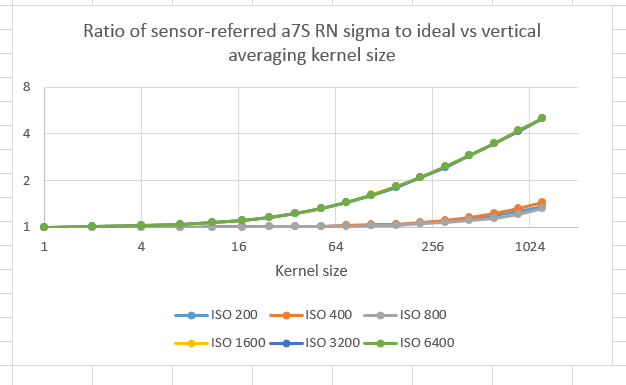Here’s the ISO 200 unfiltered dark-field image. Like all the images in this post, the images have been scaled into the range [0,1], have had a gamma curve of 2.2 applied , been res’d down to 640×480, and JPEG’d. There are hot pixels that darken the average value of the image. With 36-pixel kernels of… [Read More]
Archives for October 2014
Leica M240 read noise analysis
Today I turn the read noise analysis tools developed over the past couple of weeks to a new camera, the Leica M240. The M240 is one of those cameras that subtracts out the black point before it writes the raw file, so we won’t get a clear picture of the read noise from a dark-field… [Read More]
Hasselblad H2D-39 read noise analysis
Several people have told me that they thought that the read noise patterns from CCD sensors were less objectionable than the patterns from CMOS ones. I have an old Hasselblad, the H2D-39, and I performed an analysis. There’s a problem with looking at the read noise of this camera. Unlike the first two cameras I… [Read More]
Sony a7S dark-field images — ISO 3200
The Sony a7S switches to high-conversion-gain mode as the ISO dial is moved from 1600 to 2000. Thus ISO 3200 is the first whole f-stop ISO to get the benefit of increased conversion gain. In this post, I’ll show ISO 3200 dark-field images filtered with the same set of kernels as the ISO 100 images… [Read More]
Sony a7S dark-field images — ISO 100
In the previous post, I showed plots of data derived from a series of Sony a7S images of the back of a lens cap at various ISO settings. Now I’d like to show some of the filtered images themselves. Since there are 540 images represented in the plots (10 ISOs, 18 kernel sizes, and 3… [Read More]
- 1
- 2
- 3
- …
- 6
- Next Page »




